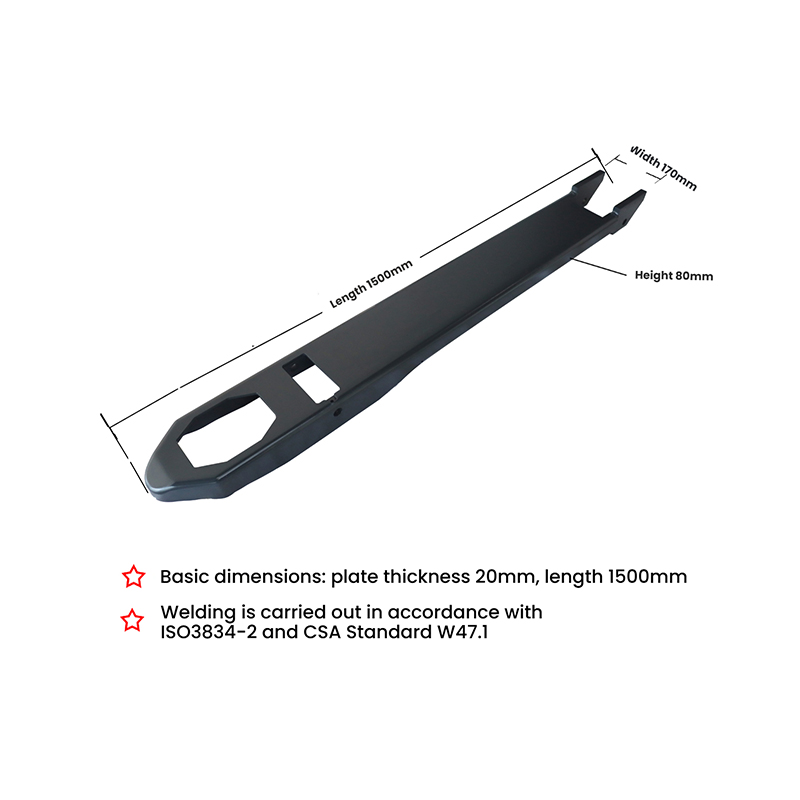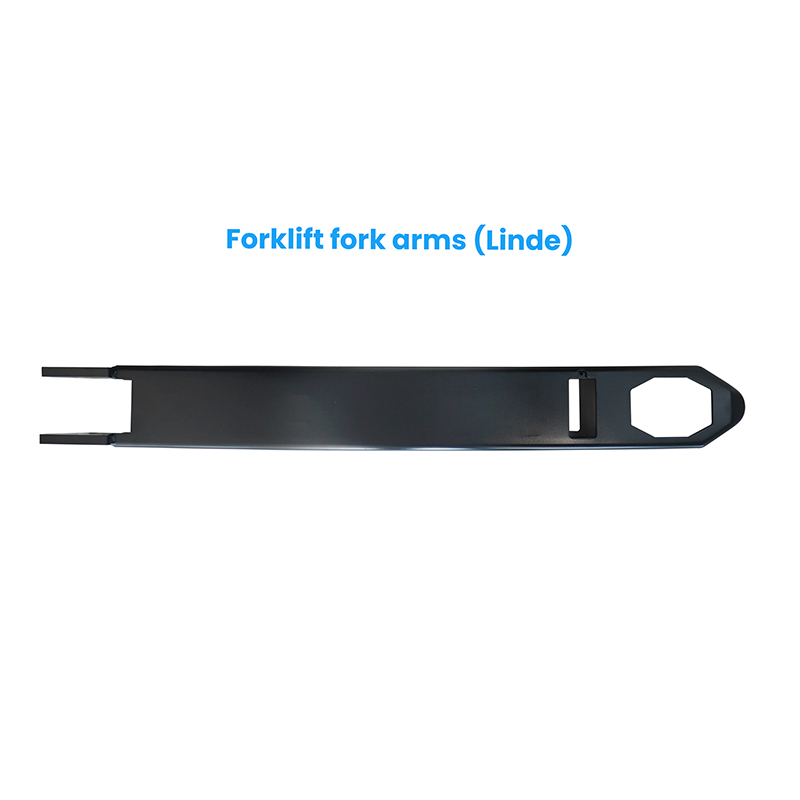In modern logistics, warehousing, and manufacturing, the forklift is an essential tool for efficient material handling, and the fork arm is its core load-bearing component. The quality, strength, and precision of fork arms directly influence the forklift’s load capacity, stability, and lifespan. With advancements in industrial standards and growing operational demands, traditional welded fork arms are increasingly being replaced by high-precision stamped fork arms. Stamping technology ensures superior strength and durability while enabling customization to meet diverse operational requirements. The following outlines the key advantages of forklift fork arm stamping parts. I. Customized Design for Diverse Operational Scenarios
Forklift operations vary widely, and the fork arm must adapt to different load capacities, warehouse configurations, and environmental conditions. Stamped fork arms can be precisely tailored according to customer-provided drawings or specific operational needs, such as 1500mm length, 170mm width, and 80mm height, ensuring perfect compatibility with the forklift’s load-bearing specifications. By customizing both dimensions and structural reinforcements, stamped fork arms are optimized for tight warehouse aisles, high rack operations, or outdoor loading scenarios. This precise design ensures consistent load distribution, operational stability, and safety, while meeting the specific challenges of each work environment.
II. High-Strength Materials Ensure Load-Bearing Capacity
The reliability of a forklift fork arm depends heavily on material quality. High-strength steel sheets are carefully selected to provide excellent tensile, bending, and fatigue resistance, ensuring that the fork arm maintains structural integrity even under heavy loads. Using premium materials significantly reduces deformation and risk of breakage during long-term operation, enhancing forklift durability. This combination of material strength and precise manufacturing directly improves operational safety, protecting both operators and cargo. Fork arms manufactured with strict material selection and stamping processes deliver consistent load-bearing performance, minimizing safety hazards.
III. Precision Stamping Process Improves Accuracy and Consistency
Modern stamped fork arms are produced with imported high-precision stamping equipment, allowing for intricate geometries and precise dimensions. Compared to traditional welded or machined fork arms, stamping offers superior repeatability and dimensional accuracy, ensuring that each fork arm maintains consistent length, width, and cross-sectional dimensions. Moreover, the stamping process eliminates weld seams or localized stress points, resulting in a structurally continuous fork arm with uniform stress distribution. This not only enhances bending resistance but also significantly improves fatigue strength, ensuring long-term stability and reliable performance during repetitive heavy-duty operations.
IV. Enhanced Forklift Operational Efficiency
High-strength stamped fork arms optimize structural design and materials, reducing maintenance frequency and minimizing downtime caused by wear or deformation. Forklift operators can rely on these durable arms to perform high-intensity, frequent lifting and stacking tasks efficiently, which is critical in warehouses and logistics operations where productivity is paramount. In addition, precise dimensional customization ensures smooth and accurate handling, improving load stability and operational comfort. By maintaining proper length, width, and thickness, stamped fork arms maximize efficiency and reduce operational risks.
V. Flexible Production and Controlled Delivery
Stamped fork arms offer significant advantages in production scalability. Whether clients require small-batch customized orders or large-scale production, stamped components can be manufactured with precise control over cost, quantity, and delivery schedule. Mass production through stamping guarantees consistent quality and dimensional uniformity across all fork arms, which is essential for fleet operations where multiple forklifts require identical, reliable components. This flexibility ensures that businesses can meet operational demands without compromising quality or delivery timelines.
VI. Professional R&D Support for Technical Optimization
High-quality stamped fork arms are supported by specialized research and development teams that continuously optimize structural design based on forklift load requirements and operational scenarios. Using advanced design software and stress analysis, engineers refine cross-sectional geometry, material selection, and reinforcement placement to ensure the fork arm performs optimally under all conditions. Additionally, personalized solutions can be provided, including customized load capacities, dimensions, or corrosion-resistant treatments, allowing the fork arm to perfectly meet customer-specific requirements. This combination of R&D expertise and advanced stamping technology guarantees professional, durable, and highly adaptable components.

Forklift fork arm stamping parts play a critical role in modern material handling, offering multiple advantages over traditional welded or machined components. By combining customized design, high-strength materials, precision stamping, enhanced operational efficiency, scalable production, and R&D-backed optimization, these fork arms improve load-bearing performance, operational safety, and forklift productivity. They ensure consistent quality, reduce maintenance requirements, and provide flexible solutions for diverse work environments. In contemporary logistics and industrial applications, high-precision stamped fork arms have become an indispensable part of forklift performance, safety, and efficiency.


